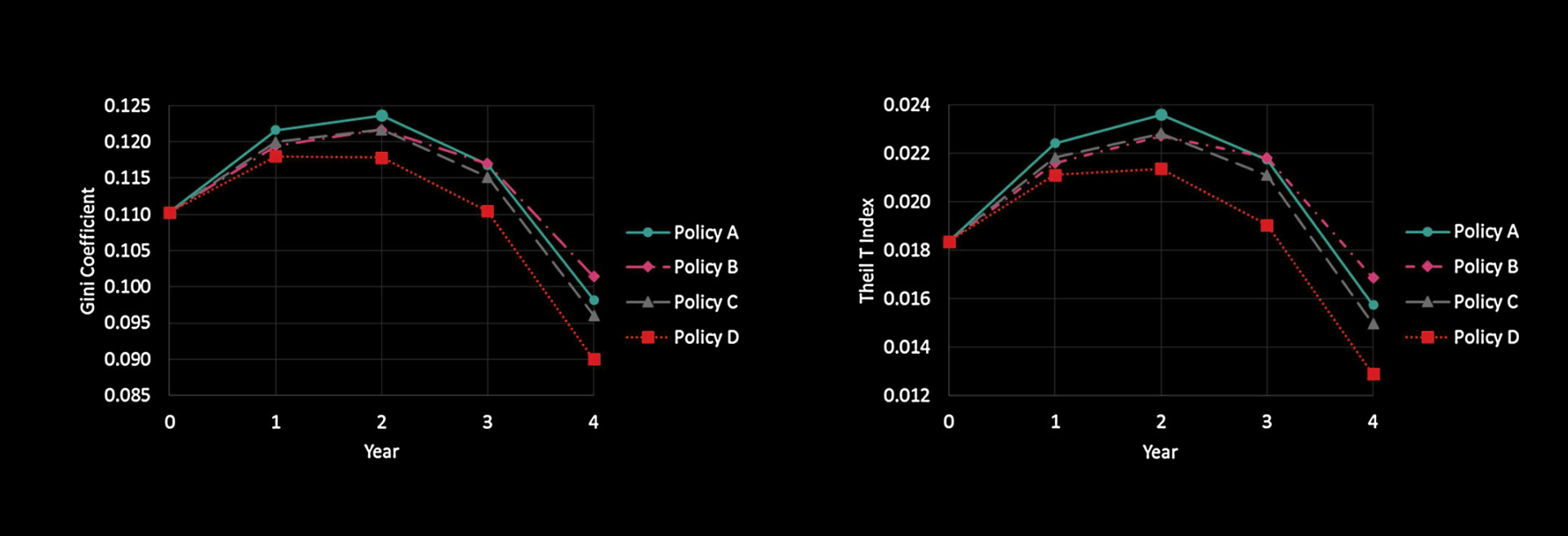Facing budget constraints and an aging highway infrastructure, decision-makers must balance cost-effectiveness with environmental and social equity considerations. While numerous studies address economic and environmental factors in infrastructure management decisions, few offer quantitative methods for integrating social equity into highway Maintenance and Rehabilitation (M&R) decision-making. This paper proposes four optimization models to achieve social equity in highway M&R programming, drawing on egalitarian, utilitarian, socialism, and Rawlsian equity theories. Implemented in a numerical case study with 500 pavement sections, the models’ performance is assessed using condition scores and equity metrics like the Gini Coefficient and Theil Index. Results reveal varying inequity levels among policies for similar network conditions, with higher budgets generally reducing inequity, albeit with policy-dependent effectiveness.







